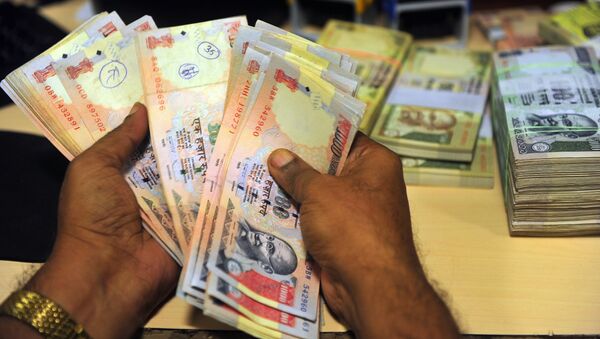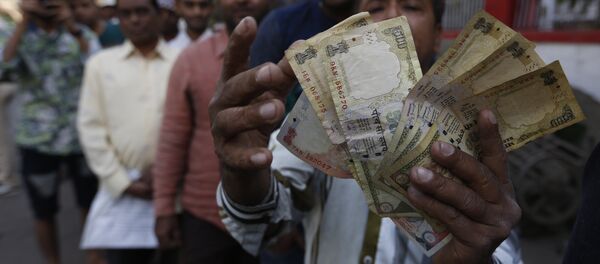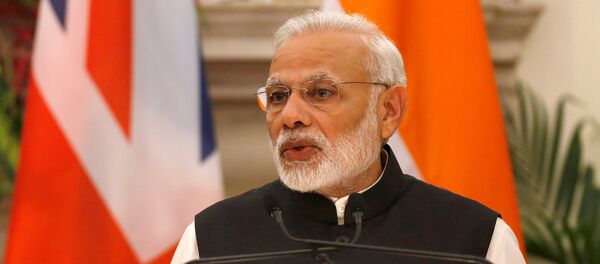Donald Trump’s election as the next US President is seen as the main factor undermining India’s investment appeal as the partnership between Modi and the Obama administration had appeared to be the basis for a structural readjustment of India’s economy. Meanwhile, as the anticipation of a Fed hike in the US has battered all emerging markets with the notable exception of Russia, the outlook for India is deemed murky.
Investors are currently pulling capital out of India’s financial markets in an across-the-board selloff in all types of assets, including equities and bonds, resulting in the rupee plunging to its record low. One US dollar buys 68.75 rupees currently, with the losses in India’s currency projected to continue.
The Indian government has issued a warning against the panic in the market, claiming the Reserve Bank of India (RBI) has the situation under control, which is eyeing its FX rate target at 69 rupees per dollar.
"The government is monitoring the situation," D.S. Malik, spokesman for India’s Finance Ministry said.
However, with Trump’s plea to abandon US support for emerging markets via the mechanisms of international trade, seen as harmful to US interests, the majority of the developing world nations are bracing for hard times ahead. Markets such as India find themselves between the rock of domestic economic inefficiency, striking poverty and dismal levels of human capital development, and a hard place of the era of favourable international trade conditions ending soon.
International institutional investors have thus far pulled out some $3.7 bln out of Indian equities and bonds, and the rupee has plunged 3pc against the dollar over the same period.
"Continued outflows along with the dollar's strength have undermined the rupee," Gao Qi of the Singapore branch of Scotiabank said. "The rupee may outperform some regional currencies such as the Malaysian ringgit and Indonesian rupiah on account of the central bank’s intervention and low foreign position in Indian financial assets."
The anticipated increase in protectionism on the part of the US and the post-Brexit UK, as well as tighter monetary conditions in the advanced economies, deemed as hampering the borrowing prospects for emerging markets, are only a part of India’s pain. Roughly two years into the Modi-led cabinet’s economic reform, the nation has made little progress improving its economy. Ex-Indian Prime Minister Manmohan Singh has blasted Modi’s policies as "organized loot and legalized plunder" of the economy.
Indeed, having demonetised the national economy by roughly 86pc in his effort to counter corruption and tax evasion, Modi has undermined the competitiveness of the domestic economy and weakened effective consumer demand.
According to Amber Capital, India’s economy will slow down to 4.1pc year-on-year by March 2017 compared to 7.6pc growth last year. International rating agency Moody’s Investor Service issued a warning on Thursday that the cash squeeze in India will entail a decline in asset quality in Indian banks, which could result in credit rating downgrades for the entire nation.
Meanwhile, as the rupee panic deepens, the capital outflow is poised to expand.
"Foreign exchange-traded funds are selling call options to hedge their portfolio against the decline in the rupee," Deven Choksey of Mumbai-based K.R. Choksey Shares & Securities Pvt. said.








